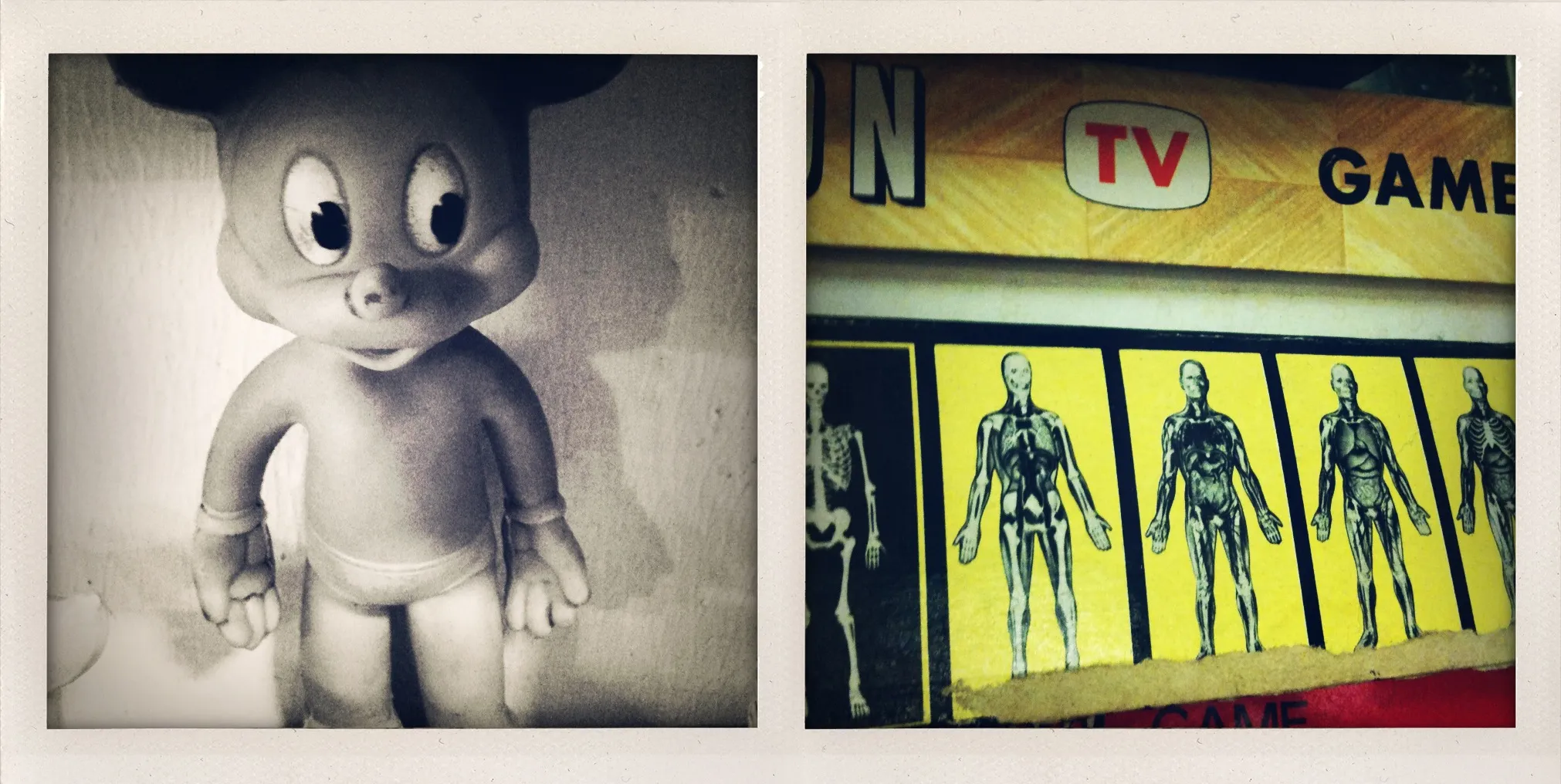My First Book on Anatomy

This diptych pairs a vintage Mickey Mouse toy with panels from a Visible Man anatomical model. Mickey’s molded, non-removable plastic underwear seals the body, maintaining cartoonish innocence. The Visible Man invites complete disassembly—muscles, bones, organs removable under clinical yellow light. Both represent early encounters with human form, but dictate opposite modes of looking: one conceals, the other exposes.
The work examines how childhood toys control bodily knowledge. What children see, when, and under what justification reflects cultural anxieties about innocence and education. The progression from sealed cartoon to dissectable anatomy mirrors society’s choreographed revelation of the body—first as harmless abstraction, later as medical specimen.
Essay written: November 2025